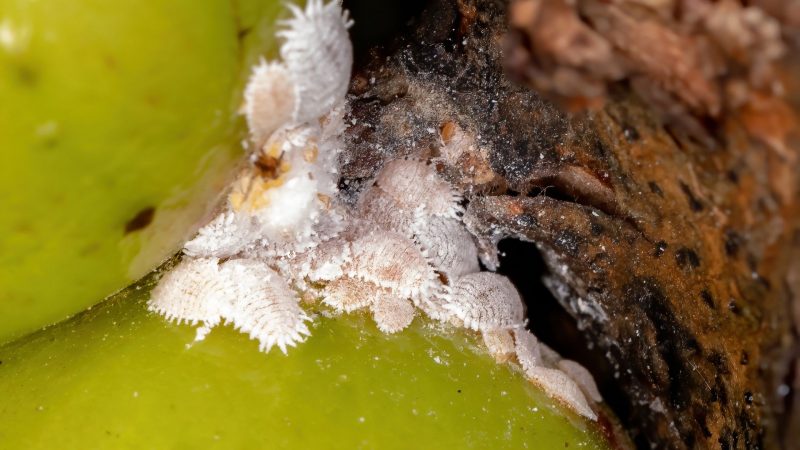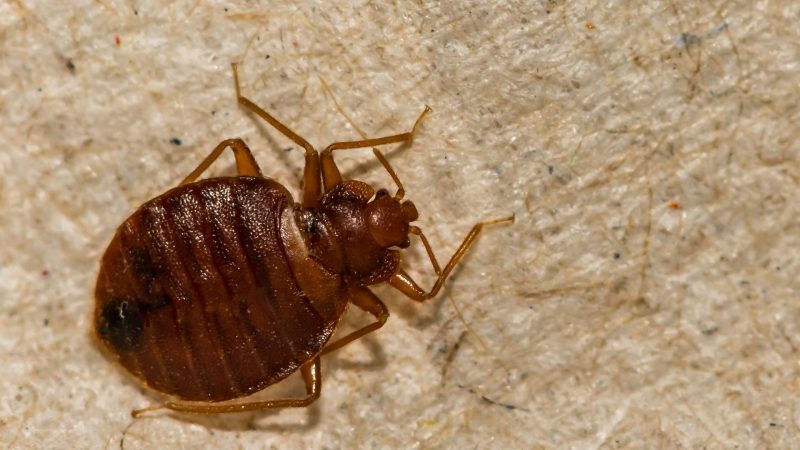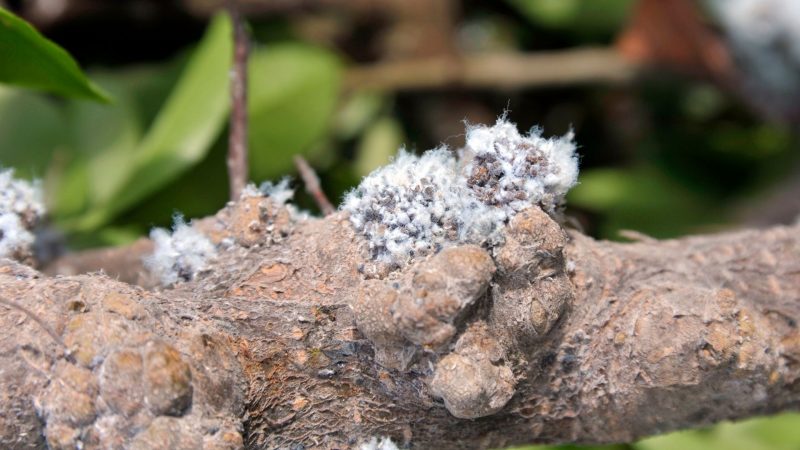There are several small white bugs in the house that are mistakenly identified as dust. Some people may think they’re all the same bugs, but they’re not. However, one common white bug in the house is dust mites. These little white bugs may go unnoticed, yet they can be harmful to those who live in the house. Fortunately, there are multiple ways of getting rid of them, and the methods for all these bugs are nearly identical.
How to get rid of little white bugs that look like dust? To get rid of little white bugs, you should clean the house regularly. Dust mites feed on dead skin cells, prefer humid environments, and are frequently found on the mattress. Changing and washing bed linens, pillowcases, and blankets can help to eliminate dust mites.
Multiple types of small bugs resemble dust. In this article, different types of bugs that look like dust, common white bugs that may be found in homes, and how to get rid of them will be covered.
What Are Tiny White Bugs Found in House?

There can be several tiny white bugs that can be found lurking inside the house. We can figure out what kind of bugs they are based on where they are most commonly found inside the house. Termites, grain mites, mealybugs, and dust mites are some of the most common white bugs seen in homes.
Can Bed Bugs Be White?

Bed bugs are usually noticed as light brown to red. However, young bed bugs, or also called nymphs, are usually white or yellowish. If they haven’t fed on blood, young bed bugs can be noticed as white bugs.
Related: Natural Ways to Get Rid of Bed Bugs: A Complete Guide
Are There Bugs That Are as Tiny as Dust Particles?
Yes, there are bugs that are tiny as dust particles. Common tiny bugs that are small as specks of dust are mold mites, dust mites, booklice, and plaster bagworms. They are so little that they might go overlooked and be mistaken for dust.
What Kind of Bug Looks Like Dust?

Below are several types of bugs that are not only tiny but also have a dust-like appearance:
Mold Mites
Mold mites are insects that consume molds as their primary source of food. These mites are usually unnoticed because they are so tiny and colored brown. They easily blend in on molded sections and are almost undetectable by the naked eye. This kind of mites don’t bite or feed on humans but pose the same threat as the molds that they eat.
Dust Mites
Dust mites are the most common inside the house. They are, however, so tiny that they appear to be non-existent and are frequently mistaken for dust. These mites feed on human dead skin cells, prefer humid environments and they’re most commonly found in areas where dead skin cells tend to collect such as beds, sofas, rugs, and carpets. They are so tiny that they are almost invisible to the naked eye.
Woolly Aphid
Woolly aphids are insects that are generally green or blue in appearance but have a white waxy coating on their bodies that makes them look like dust. They are a kind of insect that lives on plants and feeds on the leaves, buds, and barks. These insects are not poisonous or a threat to humans.
Whiteflies
Whiteflies are insects with wings that are related to aphids. They are often found sucking sap from plants and beneath leaves. These insects are generally white, with white powdered wax covering their bodies and wings, giving them the appearance of dust.
Mealybugs
Mealybugs are very similar to whiteflies in appearance. They can be identical and mistakenly the same insects. These bugs are small winged insects that can be found on plants and feeding on saps. Their bodies are covered with white powdery wax. They also have white egg sacs with a cotton-like appearance that can also be mistaken for dust.
Booklice
Booklice are little insects that are usually light brown. They got their name from the fact that they are frequently seen on old books feeding on fungi, algae, molds, and glue that was used to bind the book pages. These insects can be mistaken for dust because they commonly live in damp areas with old dusty books, papers, and cardboard.
Assassin Bugs
Assassin bugs are much larger than common bugs that are thought to resemble dust. These bugs feature a lengthy body and head, as well as long legs. They come in a variety of colors, including black and orange, as well as green, and brown. Assassin bugs feed on other smaller insects like aphids, flies, and larvae of beetles. When they hunt, they tend to cover their bodies in dust particles to give an illusion of a dust particle.
Plaster Bagworms
Plaster bagworms are tiny larvae inside a casing or shell that resembles soil or dust. Their size is similar to pumpkin seeds and they are usually grey to darker grey. They feed on wool, silk, and spider webs. These larvae are usually found sticking on walls, ceilings, and can be hiding in closets too.
Related: How to Get Rid of Plaster Bagworm? | Identification and Control Guide
How to Treat for Dust Mites?
Dust mites do not bite humans; however, their allergens can induce allergic reactions and asthma in people. To treat for dust mites, you must do the following:
- General cleaning of the house is one way to treat dust mites.
- Change beddings and blankets frequently and wash the covers, beddings, pillowcases in hot water to kill the dust mites living on the fabric.
- Dustproof coverings can be used on mattresses and pillows.
- Always dust and vacuum around the house, especially furniture, carpets, and sofas.
- Keep humidity as low as possible. Using a humidifier can be very helpful to treat dust mites since they thrive in a humid environment.
Will Cleaning Dust Get Rid of the Bugs?
Cleaning dust can be effective in getting rid of most bugs inside the house since several bugs thrive in the dirt and dusty environment. Though not all bugs, such as those that live on plants, may be eliminated by cleaning dust. If there are indoor plants, wipe the leaves and remove any visible bugs that look like dust.
Where Do Dust Mites Come From?
Because of their abundance, dust mites can almost appear naturally anywhere. The main food source of dust mites is human dead skin cells and humans create thousands of dead skin cells every minute. As dead skin cells can be found practically anywhere, they can feed also almost anywhere. Dead skin cells, on the other hand, are more common inside houses where they accumulate, therefore dust mites thrive there as well.
Do All Houses Have Dust Mites?
It is almost certain that all houses have dust mites. Wherever there are dead skin cells, there are dust mites. However, with great and constant effort, dust mites can be treated in every house.
Are Dust Mites Worse in Summer or Winter?

Dust mites prefer a warm and humid environment. They appear to worsen in summer because of the hot temperature, which causes them to multiply faster. However, the allergen caused by dust mites, which causes allergies in humans, can worsen in the winter since a large number of dust mites can hide and seek to find warmth inside the house, particularly in beds and mattresses.
Is There a Spray for Dust Mites?
There are several insecticide sprays that are effective in killing dust mites. An example of a specific spray that is known to be effective is Bedlam Insecticide Spray .
- Description: Bedlam Insecticide is specially designed for killing...
- Target Pests: Bedlam Plus Aerosol controls for the following:...
- For use In: Commercial and Residential, Apartments, Hospitals,...
- Shelf life: Bedlam Plus Aerosol will last for up to 3 years when...
- Always read and follow actual package for complete label...
How Do I Get Rid of Dust Mites Naturally?
Generally cleaning the house is the most effective way to get rid of dust mites. Clean dusty areas and using vacuum frequently can also be effective. Lowering the humidity of the house can also help since dust mites prefer higher humidity and a warm environment. Common natural insect repellents can be helpful such as lavender, peppermint, clove, or rosemary. But the most known natural remedy is eucalyptus essential oil.
How Do You Make Eucalyptus Spray for Dust Mites?
Eucalyptus oil sprayed on sofas, carpets, beds, and mattresses, not only repels but also kills dust mites. The common natural ingredients of eucalyptus oil spray are 2 cups of distilled water, 5 drops of liquid soap (preferably organic liquid soap), and 30 or more drops of eucalyptus essential oil. Give them a good mix together and place in a spray bottle.
Summary
Because there are dusty, moist, and dirty regions inside the house, common tiny white bugs thrive. They are so small that they are commonly mistaken for dust. However, there are simple measures to getting rid of the bugs. Cleaning the house frequently is one of the most common ways to get rid of them. It not only eliminates bugs but also provides a clean and appealing environment for the family.
Related: Top 5 Tiny Bugs on Window Sill | Identification and Removal
List of Sources
Pediatric Allergy/Immunology: Dust Mites. The University of Rochester, Medical Center Rochester.
Waldvogel, M., et al. (2020). Mites That “Bug” People. NC State University.
Dust Mites and Cockroaches. (2021). National Institute of Environmental Health Sciences.
House Dust Mite. Better Health Channel – Department of Health, State Government of Victoria, Australia.
Mold Mites. Iowa State University Extension and Outreach.
- How to Get Rid of Copperheads | Practical Guide - August 27, 2023
- How to Get Rid of Corn Snakes | What Makes Them Aggressive? - August 27, 2023
- How to Get Rid of Alligators | Safety Measures and Removal Methods - July 16, 2023

